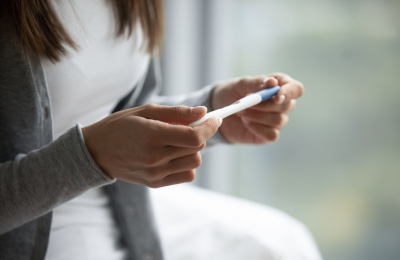
A recent report published by the Human Fertilisation and Embryology Authority (HFEA) showed that same-sex couples and single women are less likely to obtain fertility treatment on the NHS, with opposite-sex couples three times more likely to be given NHS funding.
Over two years have passed since the publication of the Women's Health Strategy report (see BioNews 1247), highlighted the obstacles presented to same-sex couples when pursuing fertility treatment, and promising to remove them. Despite this, a recent report by the HFEA 'Family formations in fertility treatment' has shown that, although access to fertility treatment has significantly increased among same-sex couples and single woman, few of them are accessing NHS-funded treatment.
The HFEA's latest report showed that while 52 percent of opposite-sex couples receive NHS funding for their first round of IVF, only 16 percent of same-sex couples and 18 percent of single women do so. Simon Blake, CEO of the LGBTQ+ charity Stonewall, pointed out that 'unlike for heterosexual couples, 90 percent of integrated health care boards in England require LGBTQ+ couples to self-fund at least six cycles of artificial insemination before they are eligible for NHS IVF treatment'. This requirement places a substantial financial burden on couples.
The report also showed the number of single women electing to pursue IVF treatment has trebled in the last decade, from 1400 in 2012 to 4800 in 2022.
Sarah Norcross, director of PET, suggests that COVID-19 lockdowns may have led more women to 'reflect on their fertile window, and decided to become single mothers by choice,' adding that 'these women may have found it preferable to take their future into their own hands, rather than wait for a partner who may or may not come along'. This increase reflects changing priorities and opportunities, with more women embracing autonomy and redefining traditional pathways to parenthood; however, NHS funding is not yet in a position to support this shift.
Overall, the last decade has seen a rise in the number of people choosing to pursue IVF, reflecting greater awareness and acceptance of fertility treatment options. However, the proportion of NHS-funded cycles has fallen significantly over the same period (see BioNews 1248). This disparity underscores the growing gap between those who can afford private treatment and those who rely on public funding, leaving many unable to access the care they need.
Julia Chain, chair of the HFEA, said 'while the HFEA does not regulate funding, we encourage those who commission fertility services to review their eligibility criteria and consider whether these have an adverse impact on access to treatment. We hope that this report will generate further discussion'.
Source BioNews 1267 by Aisha Mouhout







































































